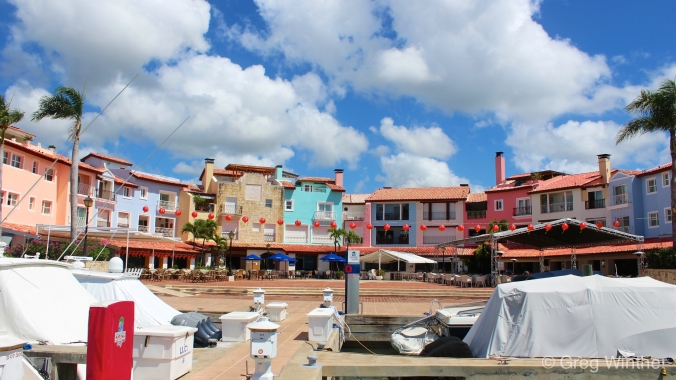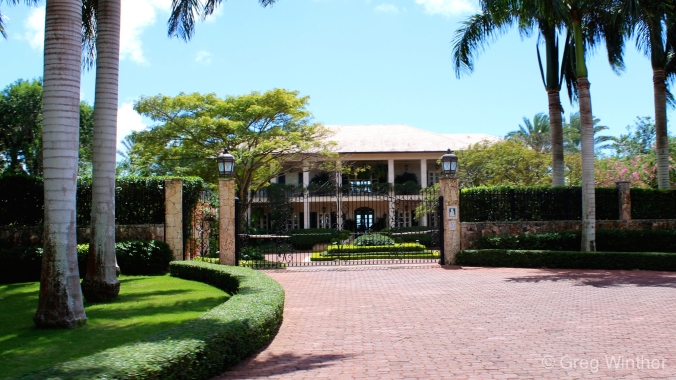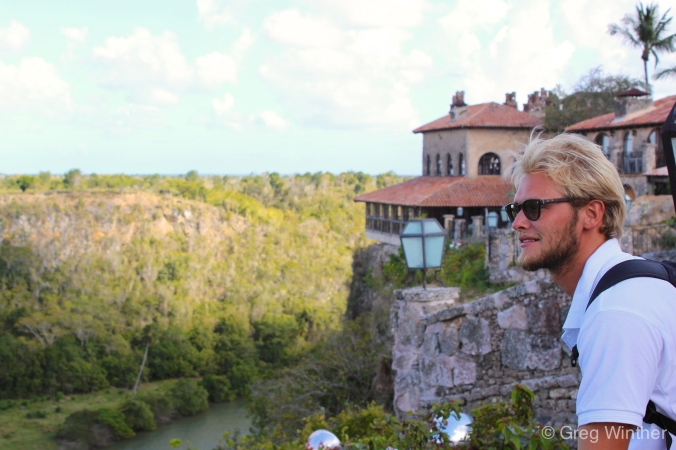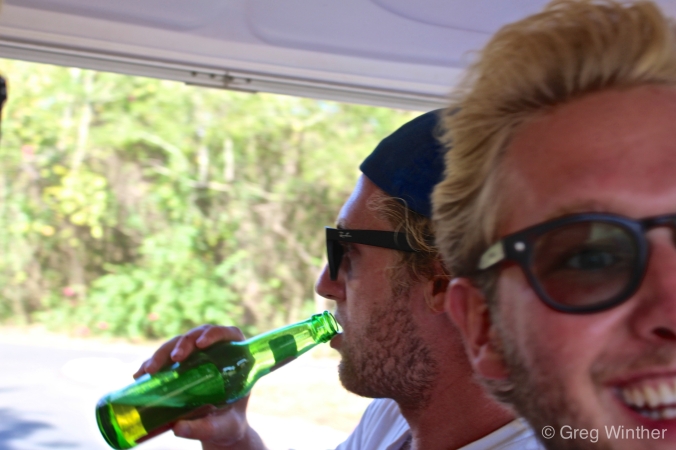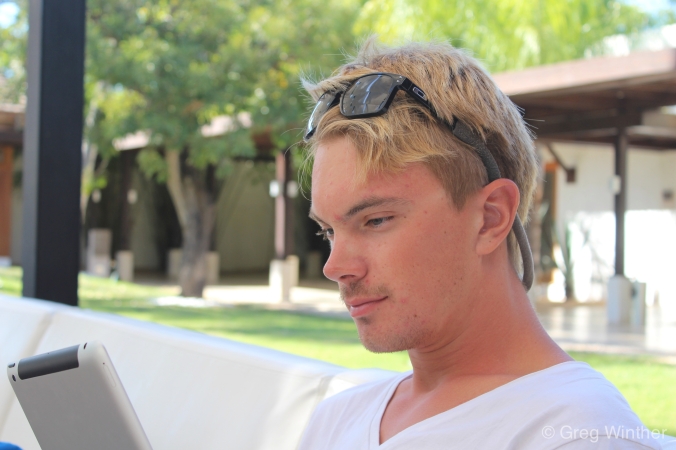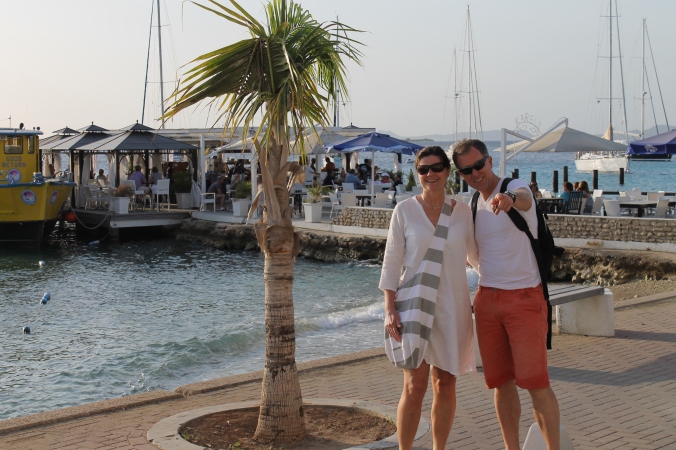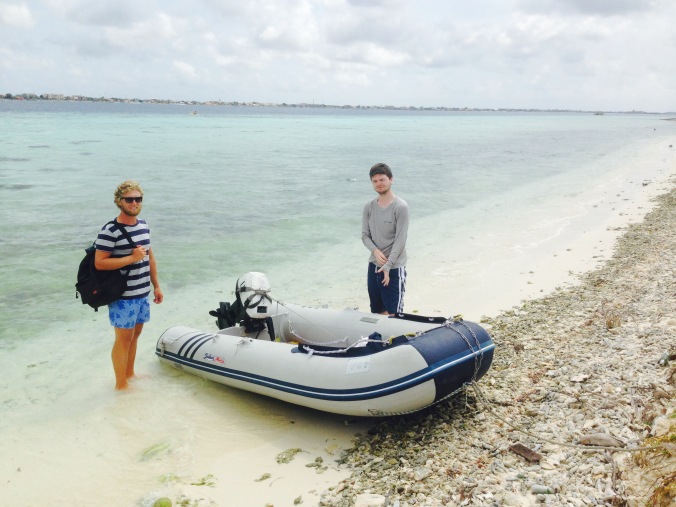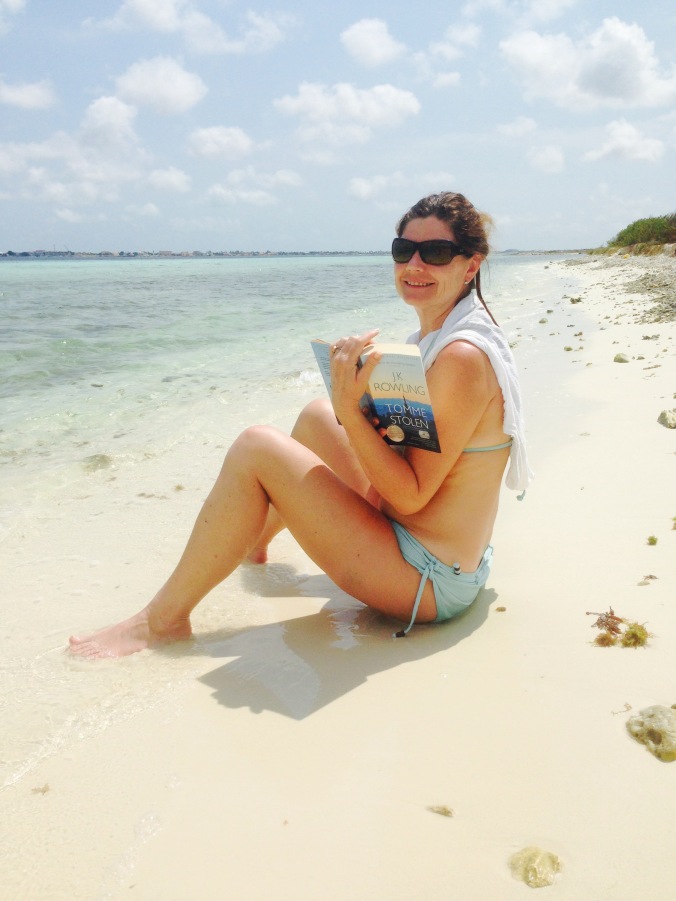After two days of some of the roughest sailing yet, northwards across the Caribbean Sea from Aruba to The Dominican Republic, we arrived in Casa de Campo Marina. We first thought we might have taken a wrong turn at some point, because on approach the marina looked more like something you might expect to see on the French Riviera. Upon further investigation, the marina turned out to be part of a much larger complex; in fact one of the largest resorts in the world.
Caso de Campo used to be the site of a sugar mill owned by the Gulf+Western conglomerate, a company perhaps best known for it’s movie studio subsidiary known as Paramount Pictures today. In 1975 Gulf+Western founder and CEO, Charles Bluhdorn a.k.a. The Mad Austrian of Wall Street, developed this 7000 acre (28 sq. km) La Romana lot into the Casa de Campo (country house) resort. Famous golf course architect Pete Dye was hired to design the now well-renowned “Teeth of the Dog” golf course, while famous designer and close friend of Bluhdorn, Oscar de la Renta, did the interior of the first hotel. Today the complex includes more than 1700 private villas, four (!) 18-hole golf courses, a shooting range, several tennis courts, three polo fields and it’s own international airport.
The marina, where S/Y CoCo is currently berthed, has been designed by Italian architects to look like the Italian fishing village of Portofino. The marina has more than 400 berths and around 70 boutiques and eateries. What is more, former Paramount Pictures set designer, Robert Copa, was hired to design a medieval-style village, overlooking the Chavon river on the eastern edge of the resort. Here one can find a large amphitheatre, a school of design, several art studios, restaurants, night clubs and a monastery.
One of the most interesting aspects of Casa de Campo, and a testimony to it’s size, is that everyone drives golf carts in order to get around. From the main entrance of the resort to the marina, where I am sitting now and sipping an ice cold Presidente beer while watching the sport fishers arrive with their catch of the day, it is almost 10 km! You could (and we have!) spend a whole day just driving around in a golf cart trying to get your bearings. Along the way you will pass hundreds and hundreds of the largest and most lavish villas imaginable. Luckily, the marina office was nice enough to supply us with a map.
Charles Bluhdorn is considered the inventor of tourism in the Domincan Republic. We have yet to see more of the Dominican Republic, but Casa de Campo is a world of itself; a playground for wealthy americans.
